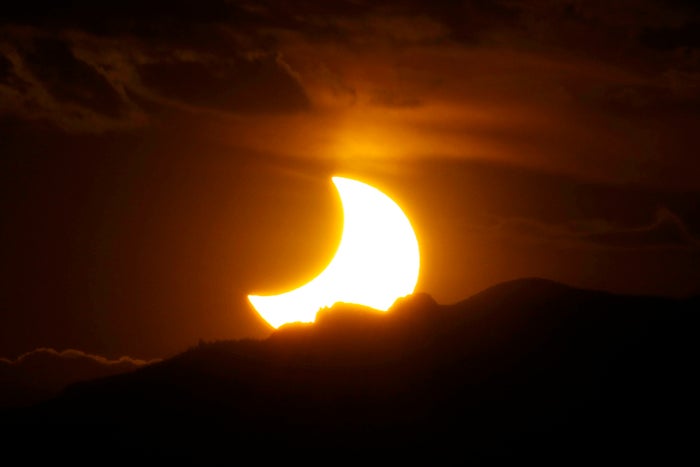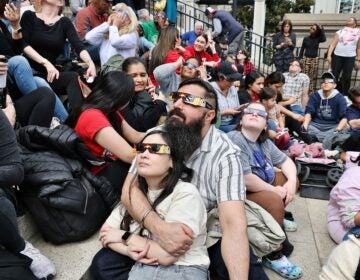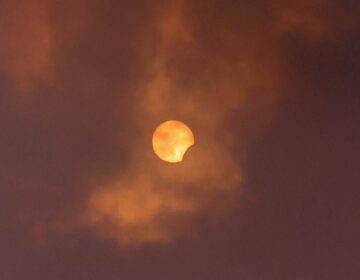The total eclipse of the sun: where, when, how and wow
Listen 00:50:00
FILE - In this May 20, 2012, file photo, the annular solar eclipse is seen as the sun sets behind the Rocky Mountains from downtown Denver. The solar eclipse that is cutting a diagonal path across the U.S. next month is a boon for Missouri tourism. Some towns will have more visitors than residents on Aug. 21, 2017. Hotels and campsites are sold out as some communities are preparing for unparalleled numbers of visitors, all to observe about two minutes of near-darkness at the height of the day. (AP Photo/David Zalubowski, File)
Guests: Jay Pasachoff, Derrick Pitts, Dave Goldberg
The excitement is growing in anticipation of Monday’s solar eclipse. Parts of the United States lie in the “path of totality” and will experience a total solar eclipse as the moon completely covers the sun. Those of us in the Delaware Valley, however, will see a partial eclipse, when about 80 percent of the sun will be blocked by the moon. Today we’ll talk about what to expect on Monday, where to go and how to view it safely. And we’ll talk about the science – what astronomers have learned from studying eclipses in the past and what they hope to learn on Monday. Marty’s guests are JAY PASACHOFF, a professor of astronomy at Williams College who has seen over 60 eclipses, DERRICK PITTS, chief astronomer and director of the planetarium at the Franklin Institute, and DAVE GOLDBERG, a professor of physics at Drexel University.
WHYY is your source for fact-based, in-depth journalism and information. As a nonprofit organization, we rely on financial support from readers like you. Please give today.





